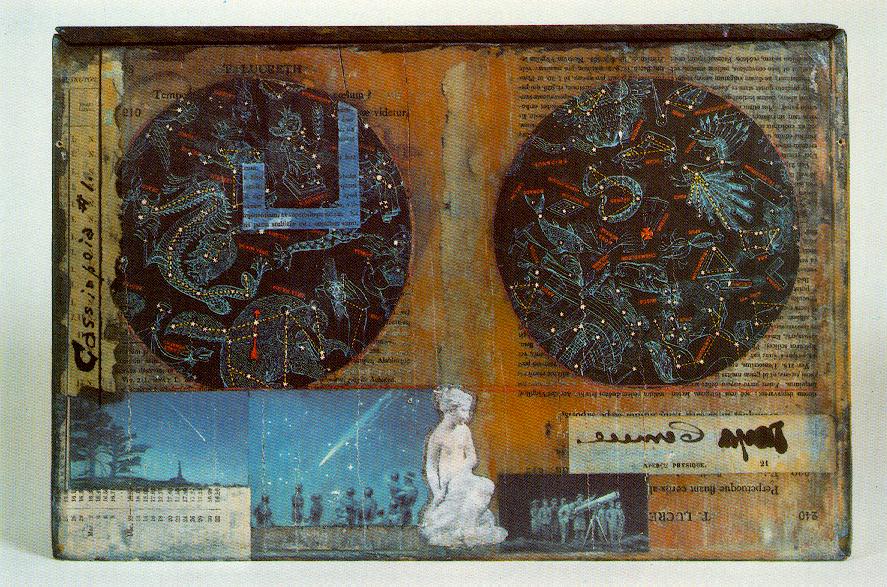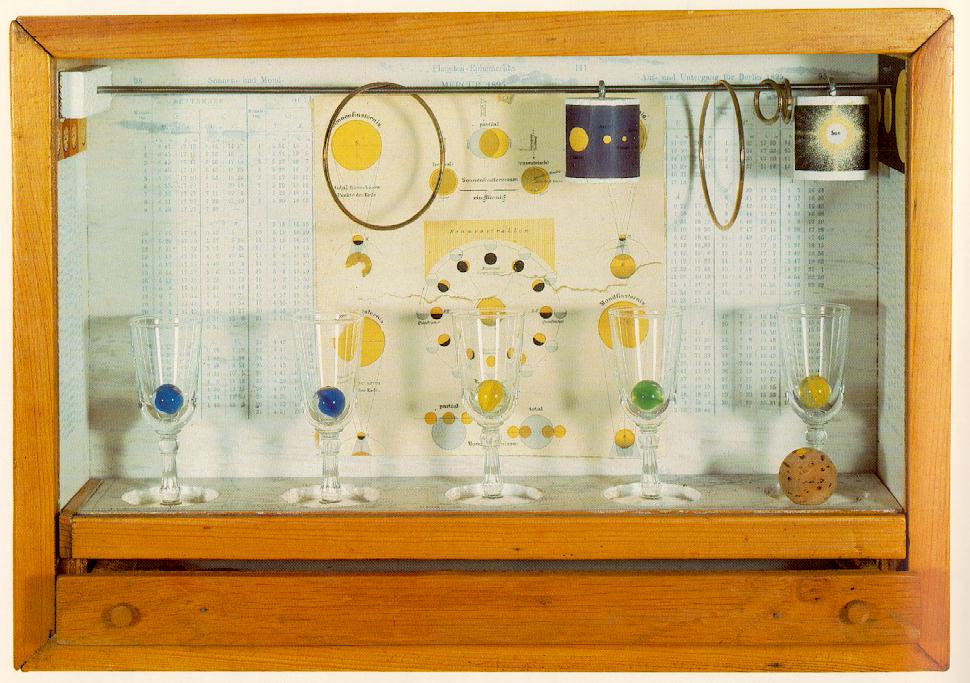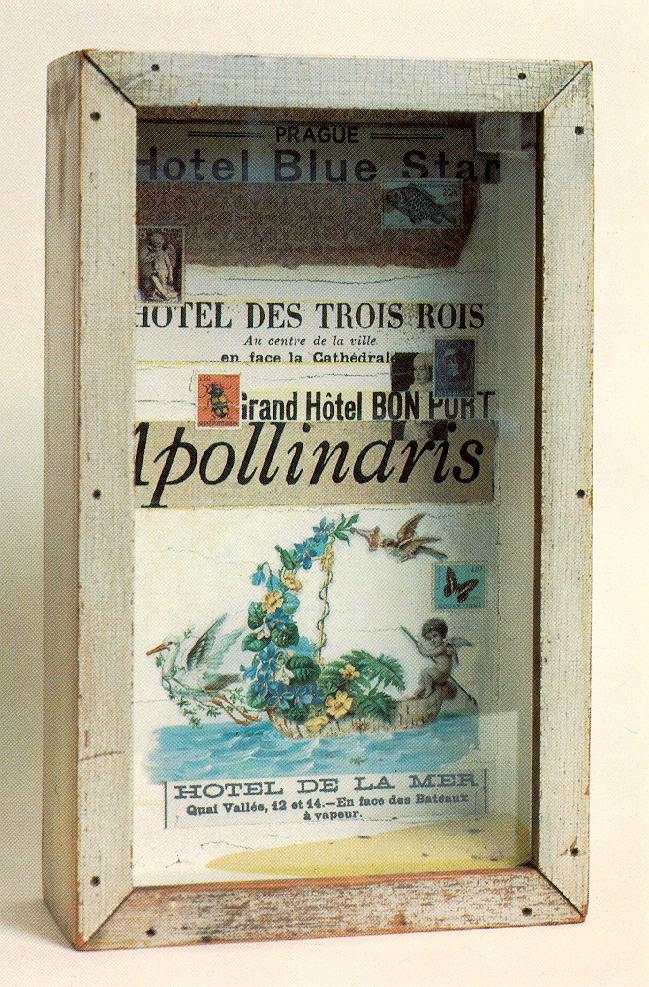I can't believe we didn't have a thread on him!.  He is truly amazing, I saw the most wonderful show of his work at the Peabody Essex Museum today
He is truly amazing, I saw the most wonderful show of his work at the Peabody Essex Museum today 
 .
.
What I love most about Cornell's work is how playful it appears to be when in fact it is full of so many various themes... all about the intersection of imagination with science, math, romace and culture. Included in his work are a lot of texts from astrology, math and science books as well as film stills of movie stars (Lauren Bacall for one) and pictures of ballerinas.
Some of his work:
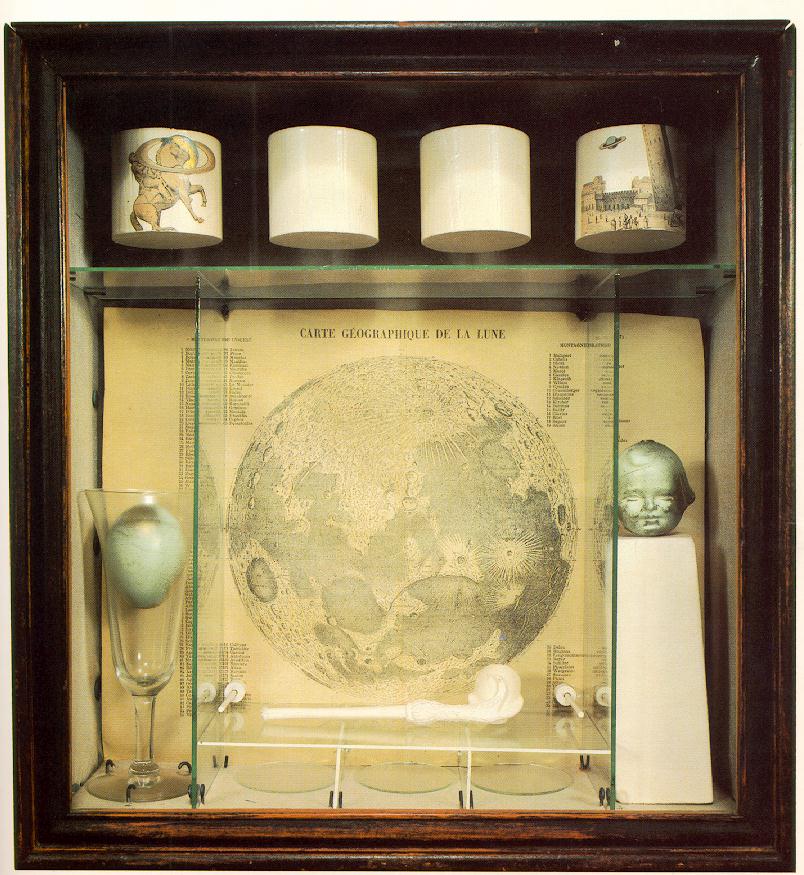
Untitled (Soap Bubble Set)
1936

Defense d'Afficher
Object
1939

Untitled (The Hotel Eden)
c. 1945
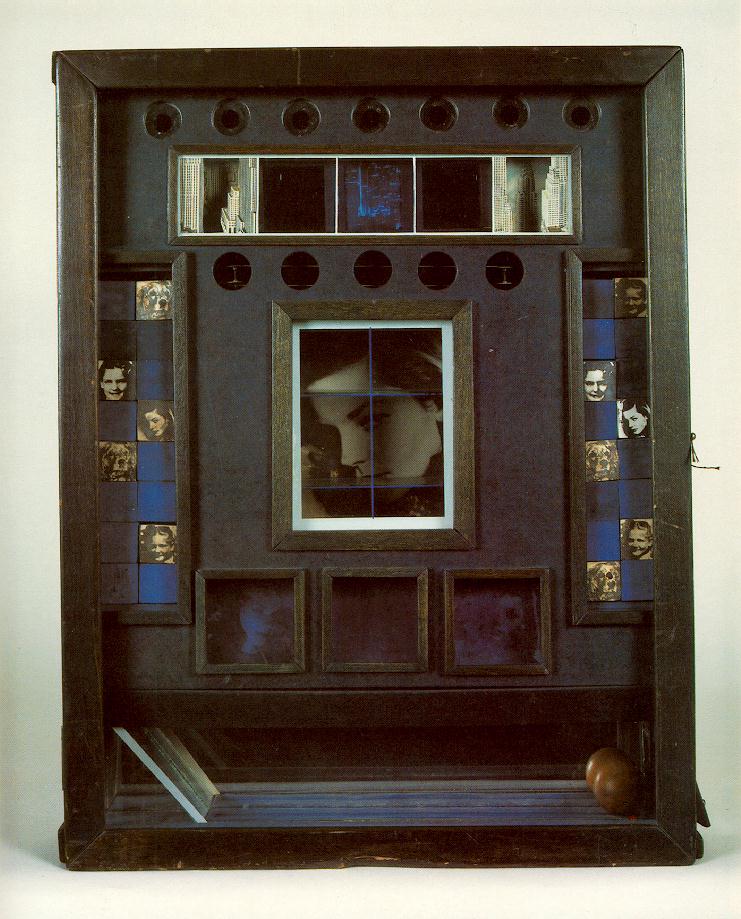
Untitled (Penny Arcade Portrait of Lauren Bacall)
1945-46

Cassiopeia #1
1960
artchive
 He is truly amazing, I saw the most wonderful show of his work at the Peabody Essex Museum today
He is truly amazing, I saw the most wonderful show of his work at the Peabody Essex Museum today 
 .
.wikipedia said:Joseph Cornell, (born December 24, 1903 – died December 29, 1972) was an American artist and sculptor, one of the pioneers and most celebrated exponents of assemblage. Influenced by the Surrealists, he was also an avant garde experimental filmmaker. He lived in New York City for most of his life, in a wooden frame house on Utopia Parkway in a working-class area of Queens. He lived there with his mother and his brother, Robert, who was disabled by cerebral palsy.
Peabody Essex Museum said:American artist Joseph Cornell (1903–1972) has been celebrated internationally for his boxes, collages, and films since the 1930s. His mining of far-flung ideas and traditions and elegant integration of woodworking, painting, papering, and drawing define the innovation and visual poetry associated with his work. Above all, he forever altered the concept of the box—from a time-honored functional container into a new art form, the box construction.
Although Cornell’s exploration of art, culture, and science was highly personal, even spiritual, his goal as an artist was to inspire others to pursue uplifting voyages into the imagination. This exhibition is organized thematically to suggest his understanding of the imagination as an echo chamber where possibilities and connections can be discovered through subtle repetition and variation. Each thematic section mingles the series, media, and time frames in which he worked.
His lyrical, often surprising combinations of materials and ideas are usually associated with surrealism, a European art movement that emphasized dreams and poetic dislocation in the 1920s and 1930s. Surrealism, however, was just one of many resources that Cornell called upon as an artist driven by innate curiosity and creativity rather than by theories and formal art training.
He often described himself as a maker because he valued his “natural” and “spontaneous” origins as an artist. Making something new from nothing or the pre-existing is critical to the processes of many self-taught artists. It is also central to the modern concept of creativity as the collision and recombination of ideas. Traditions can be reinterpreted; connections can be forged between the seemingly random or disparate. Cornell believed that artists renew and transform materials, experiences, and ideas, and this belief fueled his ability to communicate the beauty and magic in ordinary, often forgotten things.
What I love most about Cornell's work is how playful it appears to be when in fact it is full of so many various themes... all about the intersection of imagination with science, math, romace and culture. Included in his work are a lot of texts from astrology, math and science books as well as film stills of movie stars (Lauren Bacall for one) and pictures of ballerinas.
Some of his work:

Untitled (Soap Bubble Set)
1936

Defense d'Afficher
Object
1939

Untitled (The Hotel Eden)
c. 1945

Untitled (Penny Arcade Portrait of Lauren Bacall)
1945-46

Cassiopeia #1
1960
artchive

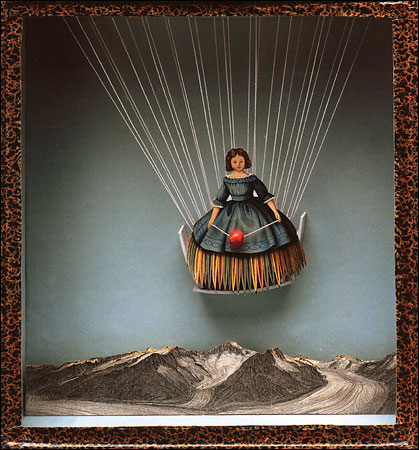
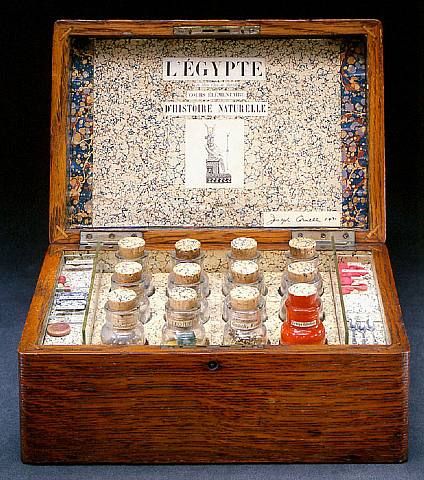




 yay, so someone finally posted!.
yay, so someone finally posted!.








 I saw that one in person!. It's beautiful!.
I saw that one in person!. It's beautiful!.  ... i'll try to find some more online
... i'll try to find some more online
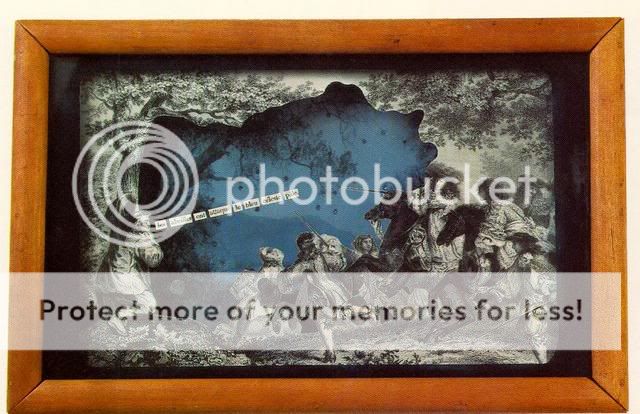

 (i.e., the image on the left)
(i.e., the image on the left)

 If anyone's in the Boston area, I'd seriously suggest making the trek up to Salem to see this show, it was so amazing.
If anyone's in the Boston area, I'd seriously suggest making the trek up to Salem to see this show, it was so amazing.